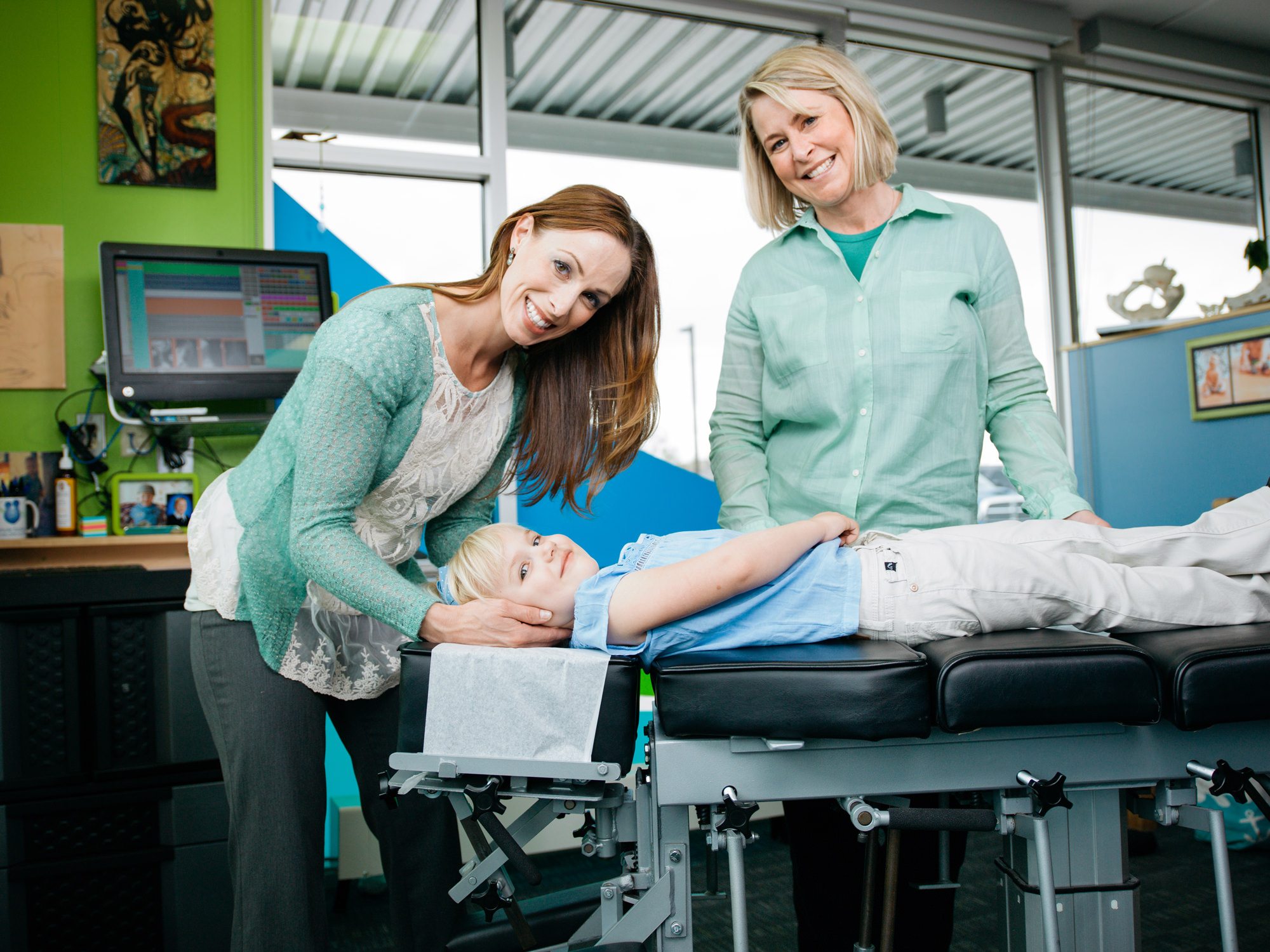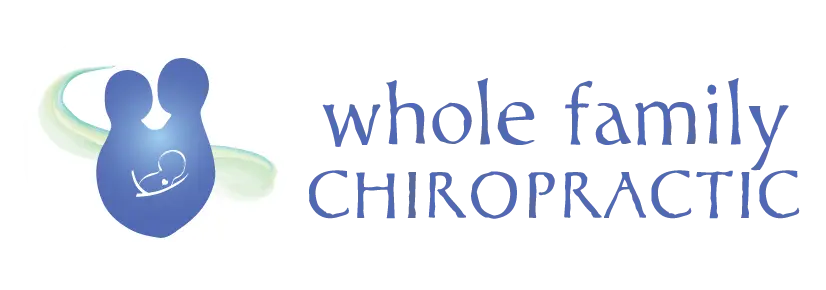Alaska’s Only
DICCP Certified Chiropractor
Eliminating spinal misalignments, which are the source of nerve interference, enhances the function of the nervous system, and provides greater health potential for both mother and child.


Alaska’s Only
DICCP Certified Chiropractor
Eliminating spinal misalignments, which are the source of nerve interference, enhances the function of the nervous system, and provides greater health potential for both mother and child.


Reaching For The Stars
Begins With The Spine
Chiropractic intervention is an essential component of prenatal care. A pregnant woman’s body is changing rapidly from one day to the next, distorting her posture out of alignment. Over time, these minor spinal misalignments exert excessive – and sometimes dangerous – pressure on the delicate nerves flowing out of her spinal cord and into her vital organs, leading to a condition known as nerve interference. Nerve interference can lead to a wide range of health conditions, including organ dysfunction, pain, discomfort, and fatigue.
Eliminating spinal misalignments and the source of nerve interference, therefore, enhances the function of the nervous system and provides greater health potential for both mom and baby.
Pelvic misalignments reduce the amount of room necessary for the developing baby to be comfortable in and may prohibit the baby’s ability to maneuver into the natural birthing position, which leads to the increased stress of labor and delivery on mother and child.

Does Your Child Need To Be Examined
By A Pediatric Specialist?
Health issues that affect babies and children may follow them as they grow into adulthood. Although many hope that children will “grow out” of a problem, due to the body’s amazing ability to adapt, underlying issues are likely to create compensations that cover up the original concern. These compensations accumulate as the child develops and will affect their health throughout their lifetime.
If your child has had any of the following in their health history, an examination by a pediatric chiropractor is essential to determine the extent of spinal weakness and nervous system injury.
Prenatal / birth
- PMaternal health issues, pelvic misalignment, poor diet, or other pregnancy challenges
- PIntrauterine constraint such as baby positioned breech, transverse, or oblique
- PDifficult, prolonged, or precipitous (fast) labor
- PDiagnosis of CPD (Cephalo Pelvic Distortion)
- PRotation or traction of the head, neck, or shoulders during vaginal delivery by use of hands, forceps, or vacuum extraction methods or pelvis, head, or shoulders in a C-section delivery
- PBirth traumas such as shoulder dystocia, injuries to the skull, fracture of clavicle or other bones, injury to the spine or spinal cord, brachial plexus palsies, facial or other nerve palsies
Adolescent
- PQuick growth spurts which change posture quickly or cause “growing pains”
- PEars, shoulders, pelvis, or leg unevenness
- PSlouching
- PComputer, reading, and texting habits that bring the head forward and/or down
- PHeavy backpacks (more than 10-15% of body weight) or backpacks which are improperly used (should be snug to the body with both straps across the shoulders and chest strap buckled)
- PDevelopmental delays, behavioral issues, special needs
- PBedwetting, head-banging, thumb-sucking
- PPainful menses
- PSports injuries, repetitive motion traumas
- POne ear, shoulder, or hip higher than the other
- PUneven head tilt
- PAbility to bend the head to one side more than other
- PUneven ribcage or scapula “winging” evident when a child is bent over touching their toes
- PUnevenly worn shoes
- PUneven leg length
- PPhysically inactive
- PSitting too long, especially in front of a computer, TV, or at school without proper ergonomics
Baby / Toddler
- PFeeding issues such as tongue or lip restrictions, difficulty turning head to nurse, arching or pulling away in discomfort, difficulty opening mouth, “ratchety” type head and neck movements with frequent unlatching at the breast or when turned to nurse at a bottle
- PPersistent postural habits or repetitively returning to a preferred position
- POnly being able to nurse in a certain position (football hold, for example) or being bottle fed while being held on one side only
- PAsymmetries of the cranial or facial bones
- PDelayed or skipped milestones or newborn reflexes
- PThe child has spent a significant amount of time in inappropriate carriers (“crotch-dangling”, or some front-facing carriers) or in one position such as in some slinging methods
- PSignificant amounts of time spent in car seats, swings, strollers, bumbos, jumpers, etc.
- PDifficulty holding up or turning the head and neck
- PIntense dislike or distress during “tummy time”
- PRolling over only to one side repeatedly, or other asymmetrical developmental milestones
- PHip dysplasia, club foot, or other joint issues
- PTrauma such as falls off of changing tables, beds, quick jerks or stops (pushes and pulls by older siblings), car accidents (even fender benders)
- PColicky symptoms
- P“W” sitting or asymmetrical sitting patterns
- PPulling at the ear, earaches or frequent ear infections
- PHead-banging, body rocking, or other repetitive self-stimulation
- PFrequent sucking on thumb or clothing, mouthing toys past a developmentally appropriate age
- PThe decreased immune system, allergies, asthma, or difficulty breathing
- PDigestive troubles such as gastric reflux, constipation, diarrhea, frequent or forceful spitting up or vomiting, distention of stomach or bowel, painful gas
- PUse of jumpers, walkers, exercise saucers, bouncy seats, swings, upright seats, or other devices before the baby is naturally able to support themselves in those positions
- PClumsiness, one foot or leg that is positioned more outwardly than the other, gait abnormalities
Because of the rapid rate of growth and adaptation, the health of the nervous system in the first years of life will determine the health of the child for the rest of their life. Regular chiropractic checkups will allow optimal balance in the child’s body, resulting in a solid foundation for the child’s health as they grow into adulthood.
“Well-child” chiropractic visits should occur at the same time your baby would go in for their “well-child” pediatrician visits as well as when certain physical milestones are reached: holding up the head, rolling over, sitting with support, sitting without support, getting on hands and knees, crawling, pulling to standing, walking and running. A visit is also necessary if a child has a delay in, skips, or does not reach a milestone.


Our founders' story
Your Family's Health is our #1 Priority
Anchorage Alaska's dynamic chiropractic duo, Dr. Ryan and Dr. Jessica Dachowski, have helped hundreds of families achieve optimal health and wellness through natural and results-driven care. Our team of chiropractors and healthcare experts can help you and your family live a long, vibrant, healthy, and pain-free life.
ALASKA'S TOP RATED CHIROPRACTORS
Trusted By Patients Across Alaska
For over 10 years, Whole Family Chiropractic has served our Anchorage community. We have made it a priority not only to improve the health of our patients through treatment, but educate them on whole body health and wellness. We strive to lift up and improve our community one patient at a time.






Chiropractic BioPhysics®
Why Corrective Chiropractic Works Better
Unlike regular chiropractic that mainly focuses on immediate pain relief, Chiropractic BioPhysics® goes one step further to also correct the source of the problem. That’s why most patients under our care not only report relief from pain and discomfort but as their posture begins to align, they notice other conditions clearing up as well.
- Back Pain Relief
- Posture Correction
- Neck Pain Relief
- Migraine / Headache Relief
- Fatigue / Fibromyalgia Relief
- Acid Reflux / GERD
- Allergies / Immune System
- High Blood Pressure
Location
600 E. 36th Ave. Suite 300
Anchorage, AK 99503
Clinic Hours
Mon, Wed, Fri:
8am-12pm & 2pm-6pm
Tue, Thu
2pm-6pm
Copyright © 2023
Whole Family Chiropractic.
All rights reserved.






























